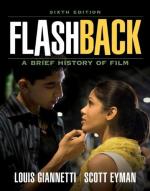
|
| Name: _________________________ | Period: ___________________ |
This test consists of 15 multiple choice questions and 5 short answer questions.
Multiple Choice Questions
1. Which director, during America in the 1940s, became renowned for film adaptations of literature?
(a) Orson Welles.
(b) John Huston.
(c) Billy Wilder.
(d) Preston Sturges.
2. By what year did "talkies" take over Hollywood?
(a) 1929.
(b) 1927.
(c) 1932.
(d) 1930.
3. The Kinetoscope was developed by Thomas Edison and _______ _______.
(a) Eadward Muybridge.
(b) Jean Louis Meissonier.
(c) William Dickson.
(d) Norman Raff.
4. Upon whose model of mass production did the Hollywood studio system manufacture films in the Golden Age?
(a) Eli Whitney.
(b) F.W. Murnau.
(c) Thomas Edison.
(d) Orson Welles.
5. When Hitler came to power, what did Europe lose in their film industry?
(a) Freedom of speech.
(b) Freedom of movement to find new locations.
(c) Funding.
(d) Jewish artists.
6. Who helped Edison open a Kinetoscope parlor?
(a) Norman Raff.
(b) Jean Louis Meissonier.
(c) William Dickson.
(d) Eadward Muybridge.
7. What animal did Eadward Muybridge photograph?
(a) Horse.
(b) Wolf.
(c) Cat.
(d) Dog.
8. What sort of performers were ideal candidates for comedy shorts in the 1920s?
(a) Vaudeville.
(b) Dancers.
(c) Shakespearean.
(d) Singers.
9. As the studios bowed to pressure from outside groups during the Golden Age, what was one of the effects seen on the gangster movies?
(a) The films became morality tales.
(b) Violence was removed.
(c) Gangster films were banned.
(d) Women were not allowed behind the camera.
10. Which of the following was not one of the main focuses of the film-making committees in the Golden Age of the Studio?
(a) Studios
(b) Story.
(c) Stars.
(d) Genres.
11. For what company did Griffith work?
(a) Lamont.
(b) Fields Inc.
(c) Biograph.
(d) Paramount.
12. What did Griffith as a director discover that elevated films from being more than technical achievements?
(a) Prohibition forced people into the theaters.
(b) Cinematography.
(c) Special effects and lighting.
(d) Talented actors.
13. What did the formation of the Patent Company force theaters showing their films to do?
(a) Force women to sit in the shadows.
(b) Allow people to steal the original reels.
(c) Pay taxes to the company.
(d) Credit all films to the Patent Company.
14. From what entertainment aspect did Orson Welles tap in order to innovate the ways films were made?
(a) Music.
(b) Theater.
(c) Dance companies.
(d) Sound design.
15. Which director from Germany became known for his films about history with injections of off-handed comedy?
(a) F.W. Murnau.
(b) Ernst Lubitsch.
(c) Sergei Einstein.
(d) Fritz Lang.
Short Answer Questions
1. In 1947, what did the House of Un-American Activities Committee began to investigate?
2. Which of the following words can be used to describe the films that were produced during the early years of the Golden Age?
3. Which world-class, renowned filmmaker stayed made propaganda films for Hitler?
4. With what film technique did European filmmakers begin experimenting?
5. In what era did early film begin to primarily grow?
|
This section contains 442 words (approx. 2 pages at 300 words per page) |

|




